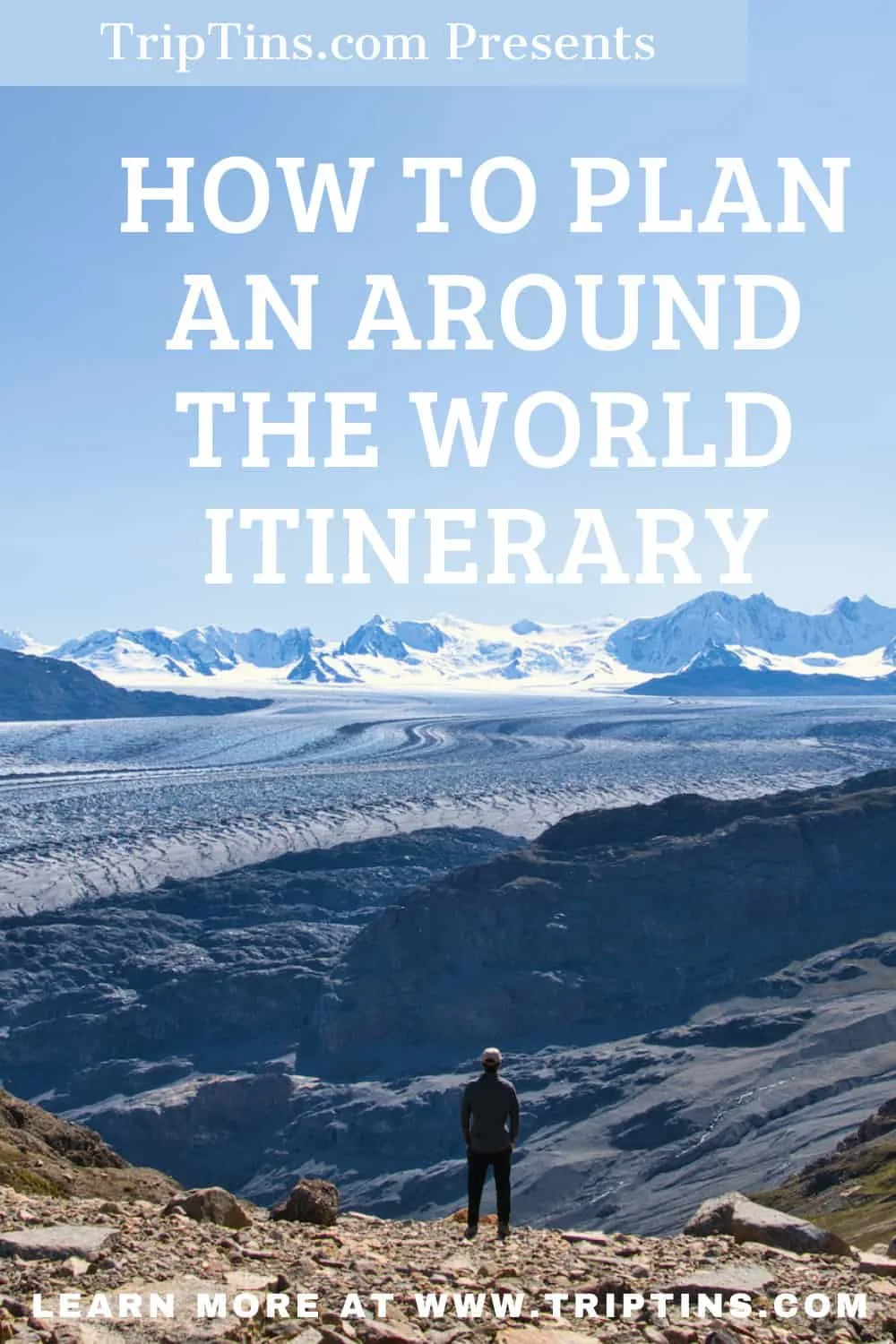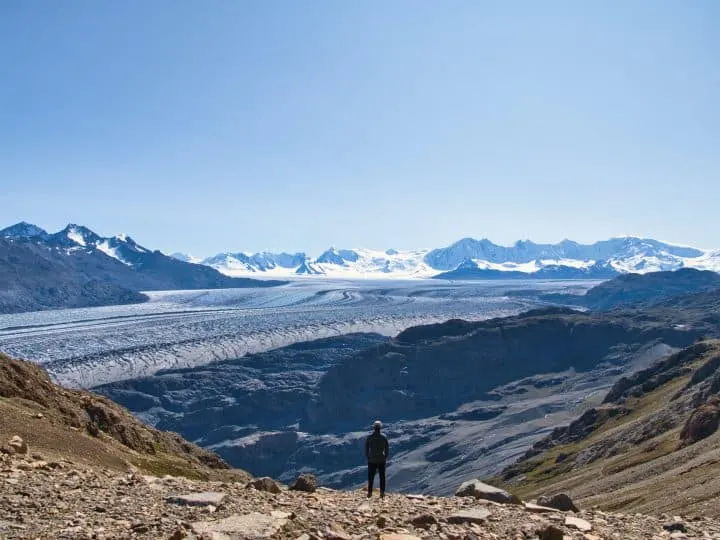Planning a trip around the world is no easy task to accomplish. There are so many different variables to consider. These include questions like what countries to visit, how much time do you have, what’s your budget, and how to travel in general.
When I was planning my one-year trip around the world, it took me months to get everything set in place. This post is here to help walk you through everything that went into my process when planning a trip around the world.
I hope by the end of reading this you will start to ask yourself (and answer) the right questions, to get you closer to heading out on a trip of a lifetime.
* Affiliate Disclosure: This post may contain affiliate links, which means I may receive a commission if you make a purchase through the links provided, at no additional cost to you. Thanks for supporting the work I put into TripTins!
1) Planning a Trip Around the World Overview
There are many considerations when planning a trip around the world, and it can certainly be overwhelming thinking about each one of these topics.
But as you learn more about where you want to go and how to go about your travel, the trip will slowly begin to come together. This is going to be a process, and it will take patience and planning to get there. At the end of the day though, it certainly will be worth the effort.
Below is a list of the main considerations that I took when planning my trip. Throughout the remainder of this guide, I will talk more in detail about each one of these.
→ Where do you want to go?
→ Pace of travel
→ How long are you able to travel for?
→ What is your budget?
→ Weather considerations
→ Local holidays
→ Avoiding peak season
→ Do you have prior commitments?
→ Figuring out a logical route
→ What to pack?
→ Vaccinations
→ Travel planning tips
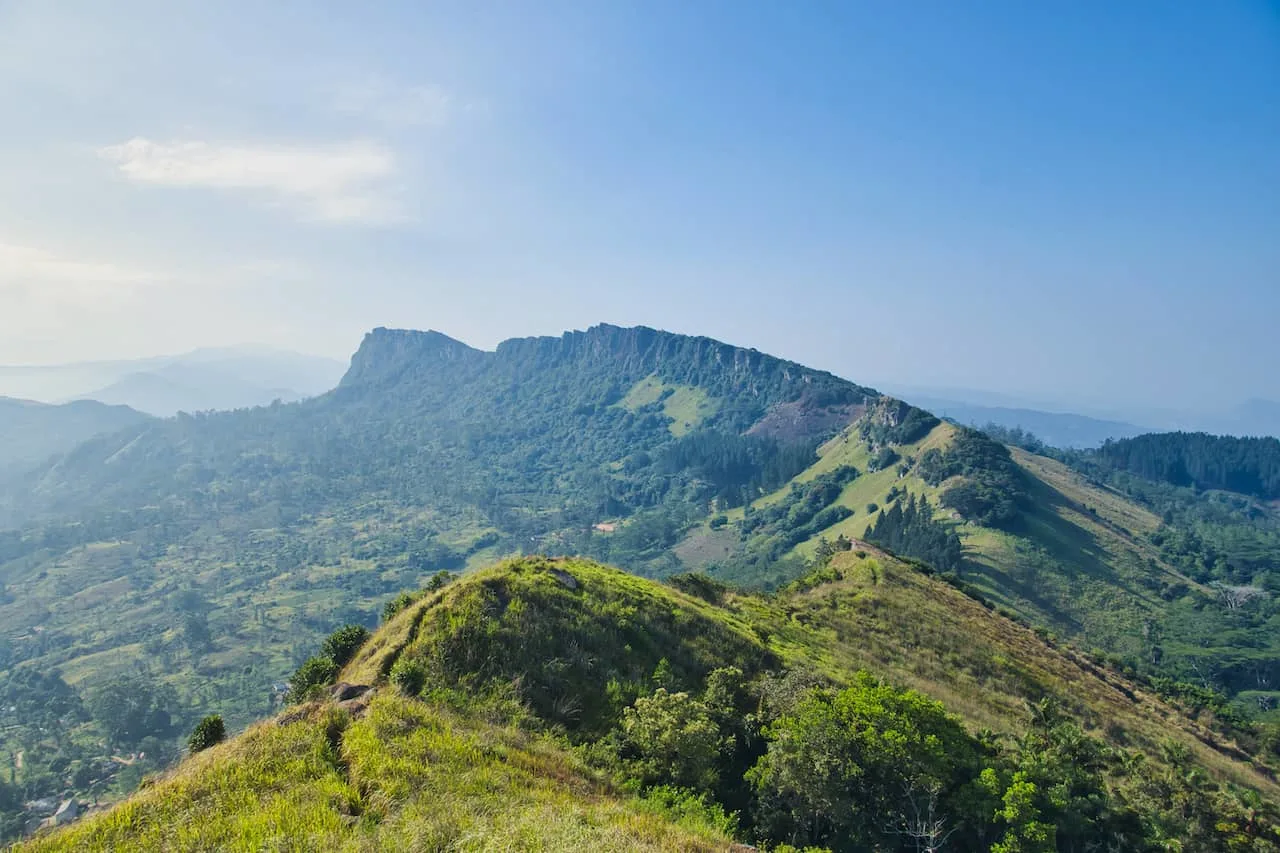
2) Where Do You Want To Go?
One of the first questions you need to ask yourself is where in the world do you want to go? This can be quite overwhelming as there are hundreds of countries and thousands of cities around the world.
Maybe you have a bucket list of countries, cities, attractions, activities, hikes, or festivals you want to attend. Start with writing out all of these types of experiences that you have been wanting to take part of.
I knew when I was planning my trip around the world, I definitely wanted to go to certain countries such as New Zealand, Australia, Indonesia, and the Philippines. In addition, I knew I wanted to do some of the most scenic hikes in the world, so I added on Nepal and Patagonia to my “must do” list.
From there I slowly began to figure out what a route could look like and what other countries I could add on along the way to make the trip include a variety of experiences.
While I love hiking, I didn’t want the trip to only be hiking. I was sure to add places like Japan and South Korea for the food and culture they offered. I added places like Costa Rica to get some wildlife and rainforest experiences.
As you figure out places you want to go to, start mapping them out in Google Maps, or better yet, buy a paper world map and lay it out in front of you to better visualize the trip itself.
Remember – you don’t need to go everywhere! Countries will always be there and you can always save places for the future.
» Read more: check out my around the world itinerary to get a better sense of where I went during my year of traveling
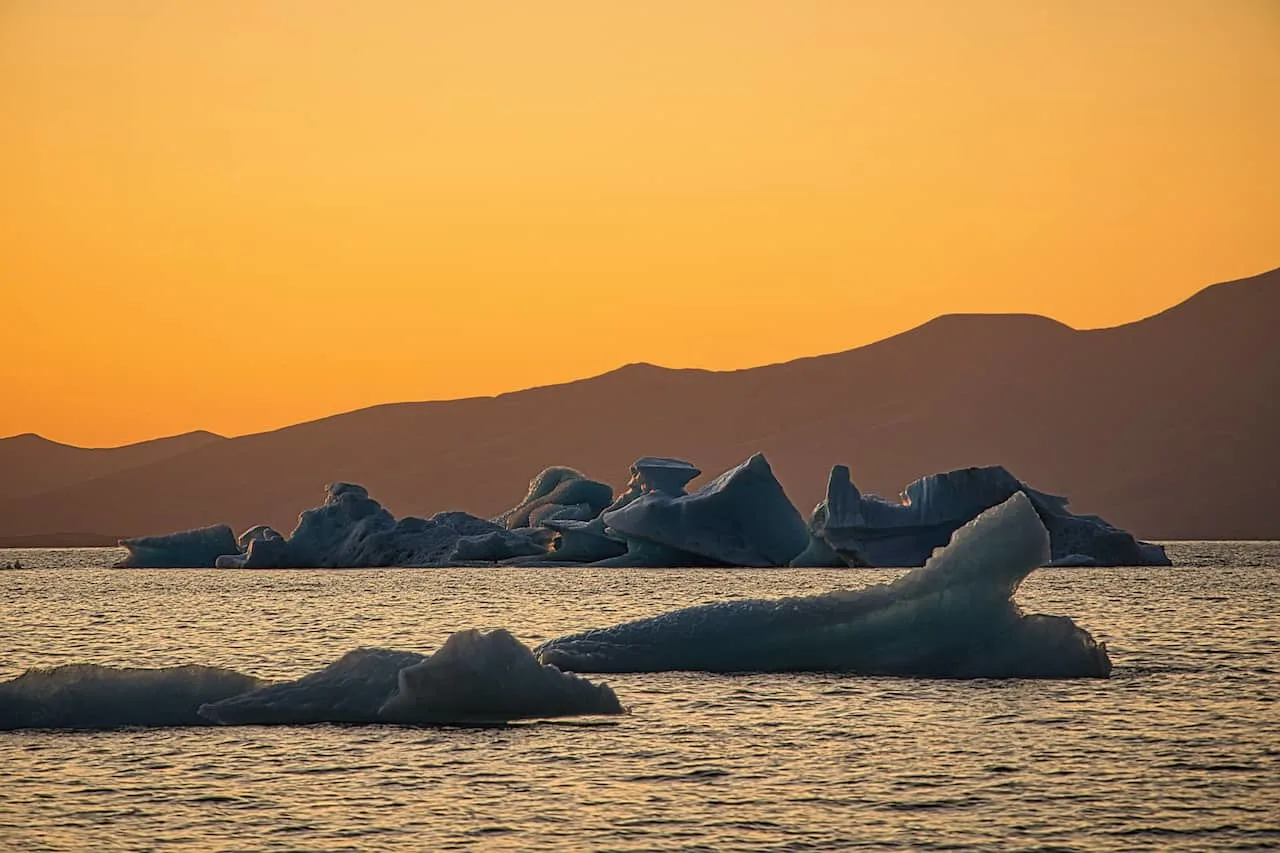
3) Slow vs Fast Paced
As you are putting together a list of countries to visit, you will also want to think about how long to spend in each one of these places.
During my trip around the world I ended up visiting 20 countries over a year time period. Other people who travel for a year may visit double the amount of countries.
As I was planning my trip I wanted there to be a balance. I did not just want to rush from country to country just to “check countries off a list”. I wanted to fully enjoy and to experience the countries that I was visiting.
So, on average I was spending around 2-3 weeks per country. The longest was 30 days in Indonesia and the shortest was 4 days in Jordan and Singapore.
After researching and planning what countries I wanted to visit, I probably removed a third of the countries from the trip. For my travels, it was more about quality over quantity. Other people however, may have no issues going at a faster pace and enjoying their travels along the way.
It is not only figuring out how long to spend in each country, but it is also figuring out how many different cities to visit once you are in the country. 30 days in Indonesia sounds like a nice amount of time. But if you decide to see 20 cities in Indonesia in 30 days, it sounds like a much faster pace trip.
I ended up visiting 10 different cities during my month in the country, averaging out to 3 days per city. Some places I just spent a quick 1 day (hiking Ijen in East Java), while in other places I spent 5+ days (relaxing on Gili T).
I will also say that you don’t need to figure everything out up front! You can certainly decide as you go once you are in a country. I did this multiple times – not even knowing how long I would spend in a city or country once I arrived.
During the planning phase though, you should at least have a good outline of what countries to visit and the route you would like to take.
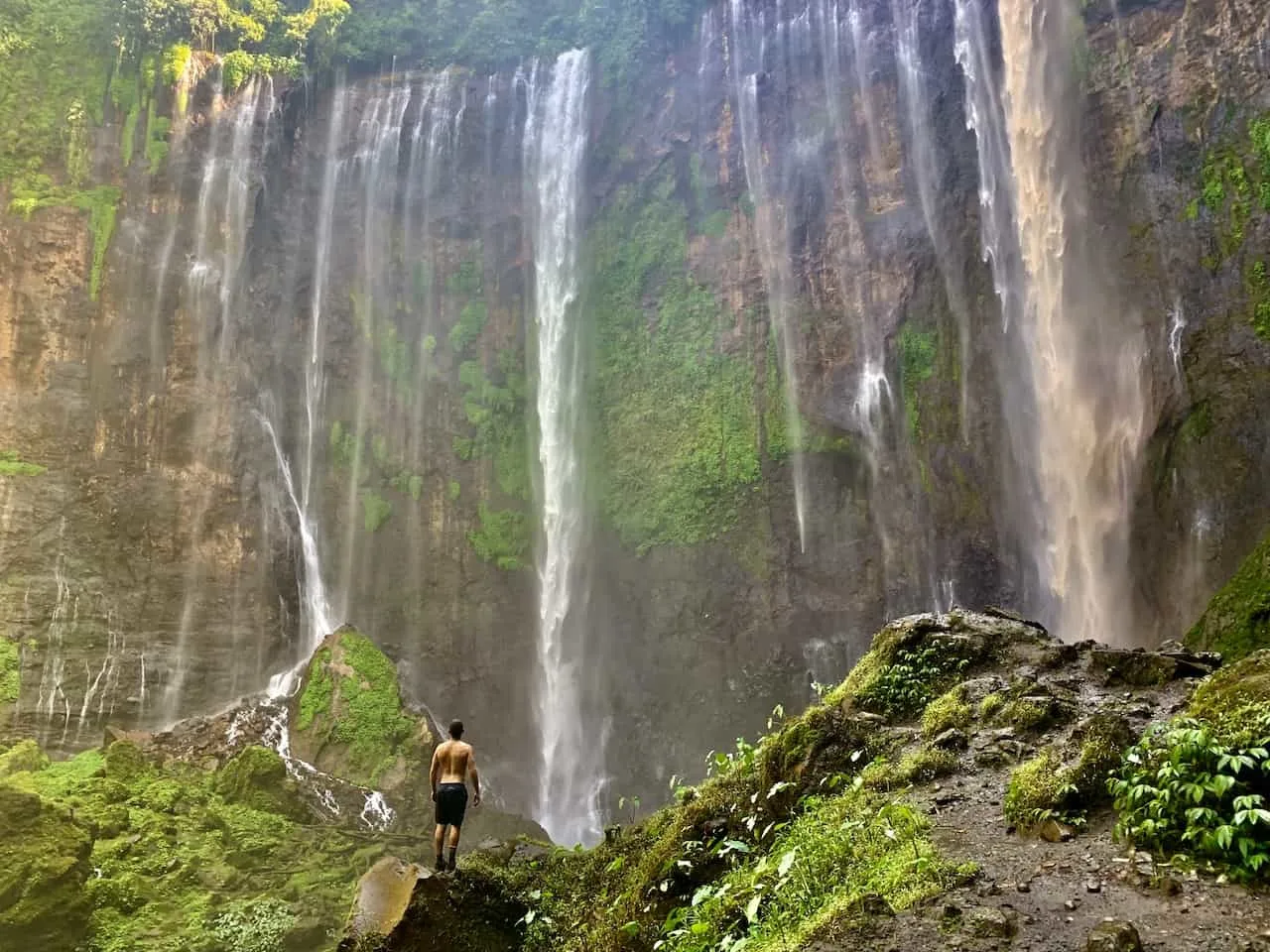
4) How Long Do You Have to Travel?
One of the most important questions you have to ask yourself, is how long do you have to travel? Is it just a month, maybe a summer, 6 months, or a year? Maybe you don’t even have a set timeframe and you want to see how you feel as you go.
At first, I told myself I wanted to travel for a year and I had a pretty solid idea of what 75% of the trip would look like.
There were many iterations of the trip as I started it – removing countries, adding countries, and even extending my trip another few months (although that got cut short due to Covid).
Once you have a good understanding of how long you have to travel, you can start balancing out countries, pace of travel, and timing to figure out what will actual be feasible for you to do.
→ Get inspired by reading through some motivational short travel quotes for your trip around the world
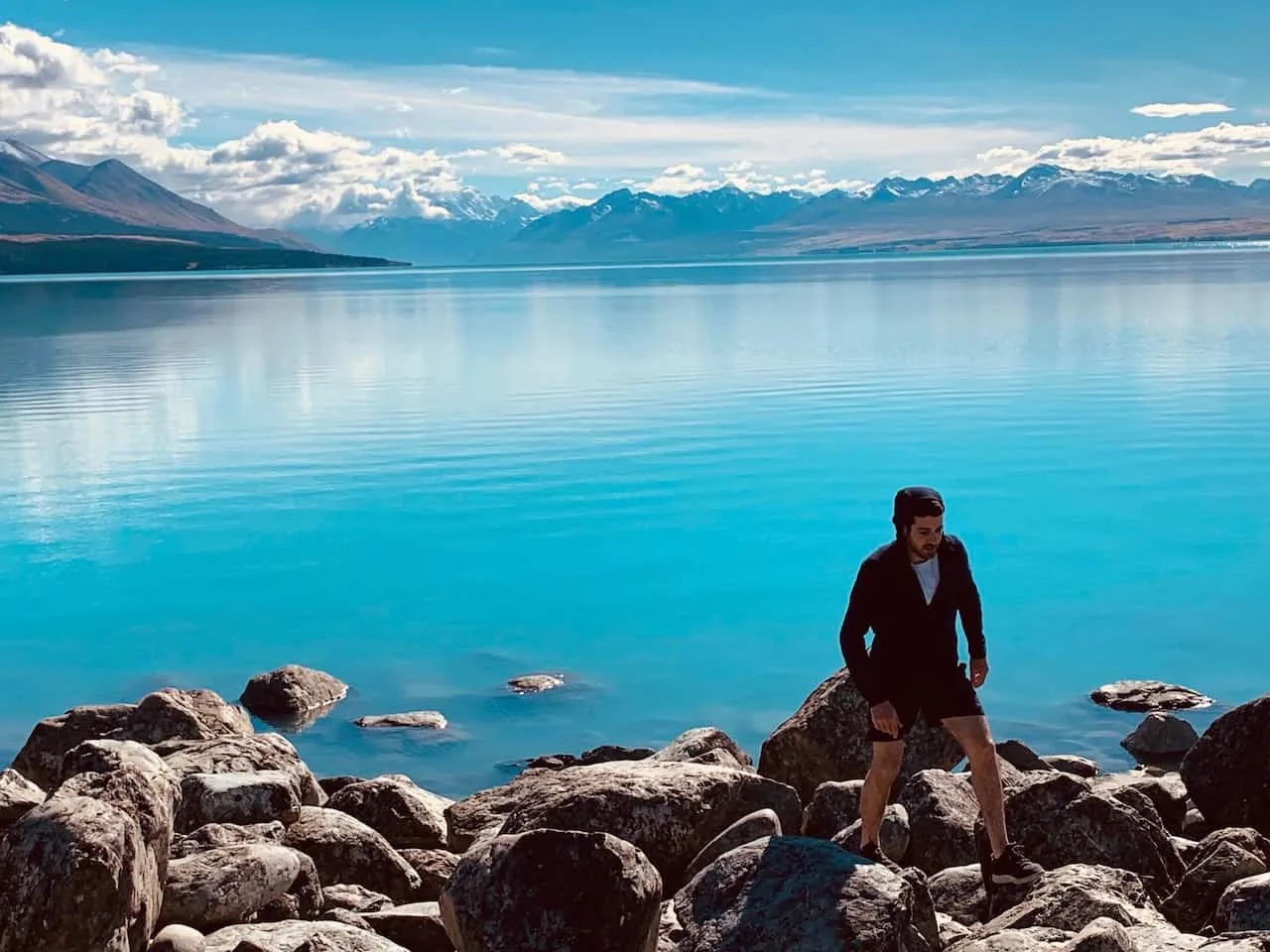
5) What is Your Budget?
One of the main reasons it is hard to take time off to travel is due to money. Spending an extended period of time without working, and living off your savings is not an easy decision to make.
With that said though, maybe you are able to make money as you go along. Whether it is work you are able to do virtually or maybe picking up an odd job or two along the way. There are ways to make money while traveling too.
When I was planning my trip and choosing which countries I wanted to go, I needed to also understand how much it would cost to travel comfortably on a daily basis.
I had a number in mind that I was comfortable with spending from a total level. From there I took that number and divided it by the number of days I wanted to travel for. High level example would be, if I wanted to travel for a year and had a budget of $35,000, that daily budget would come out to a little less than $100 per day ($35,000 / 365).
When you think of what $100 can get you in Switzerland vs what $100 can get you in Nepal, there is a huge difference. There are some countries where $100 won’t get you nearly as far vs other countries.
So, while I did travel to more expensive countries like Japan, New Zealand, and Australia, I also traveled to cheaper countries like Indonesia and the Philippines. Some countries will come in over that daily budget, while others will come under the budget.
As you are planning your trip, understanding your budget vs. understanding how much each country will approximately cost, will be a very important component.
Some additional budget items to consider when planning a trip include where you will be staying, how you will get around, and how you want to eat.
Do you plan to stay in hostels, which may cost just $10 a night or do you plan to stay in hotels which may cost $50 per night? Are you going to want to have your own rental car to have more flexibility or are you fine with taking public transport? Would you cook your own food or would you eat out at restaurants for every meal?
These are just some of the questions you have to ask yourself. As I was figuring out those types of answers for myself, I realized it all just came down to priorities.
I wanted to meet other travelers (since I was a solo traveler), so hostels worked for me. Having the flexibility to build my own route with a rental car and not rely on public transport all the time, was something I was willing to spend money on. Cooking my own food was something I did often to help out with my budget.
There are certainly a lot of considerations when it comes to budget, and each person will have a different approach to what is best for them.
→ Learn more about how much does it cost to travel around the world
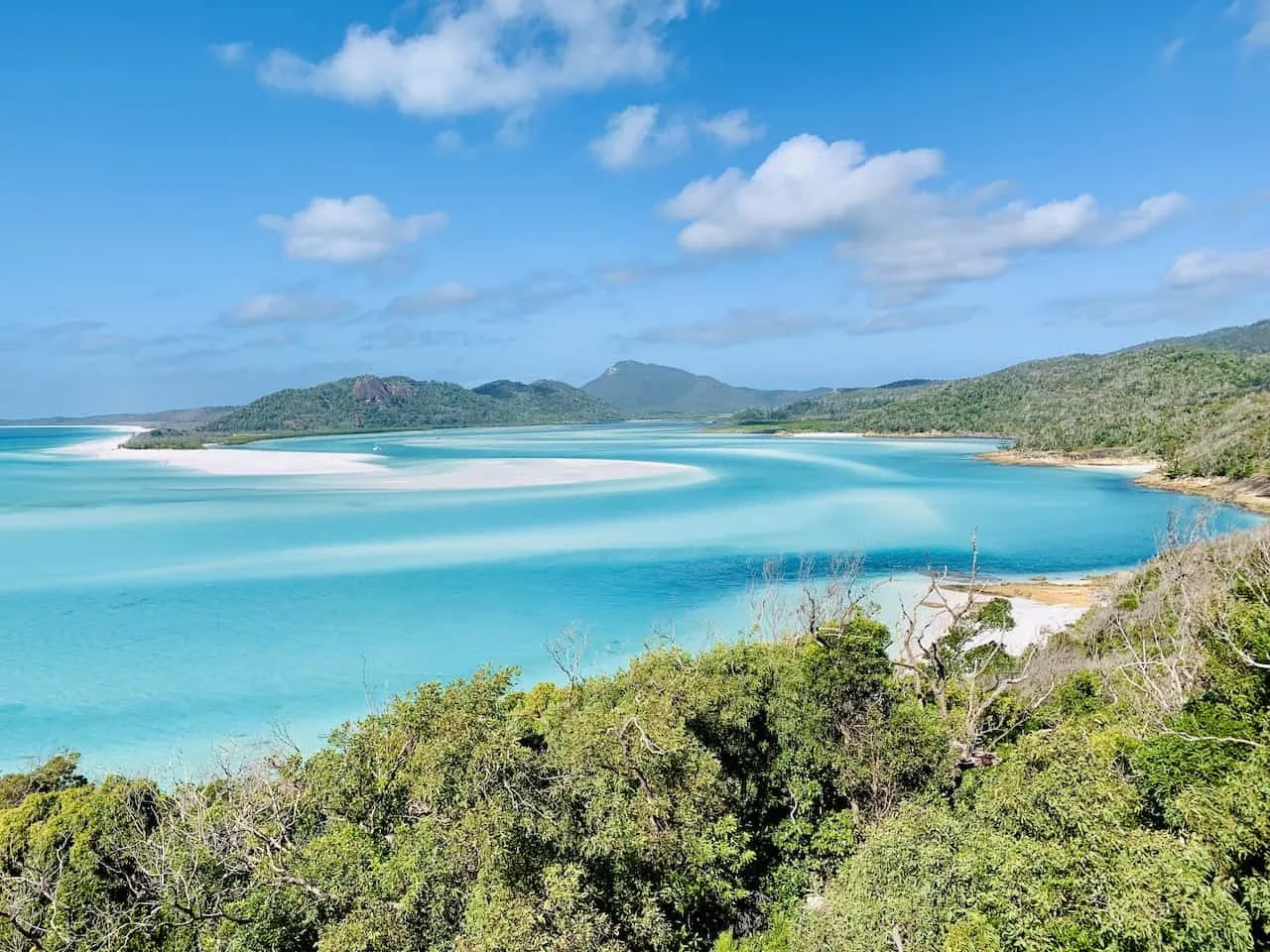
6) Weather Considerations
At the top of my mind when I was planning a trip around the world was the weather. The last thing that I wanted to happen was to plan a trip, go to all these different places, and consistently be shut out by the weather.
Some countries have four seasons – winter, spring, summer, fall. Other countries have just the dry and rainy seasons. And then you have countries that may have different types of weather for different regions (think Chicago vs Florida).
All of this needs to be taken into consideration when planning the timing of when to go to certain countries. For me, it was always chasing the ideal weather.
I wanted to have the best possible experiences when visiting each place I went to. Just a handful of times during my trip was I completely shut out of doing an activity because of weather circumstances.
At the end of the day, you cannot control the weather. However, you can plan to the best of your abilities to choose the times of year when the weather is most ideal for the activities you want to do.
Check out some other helpful travel tips to better help you plan your trip around the world.
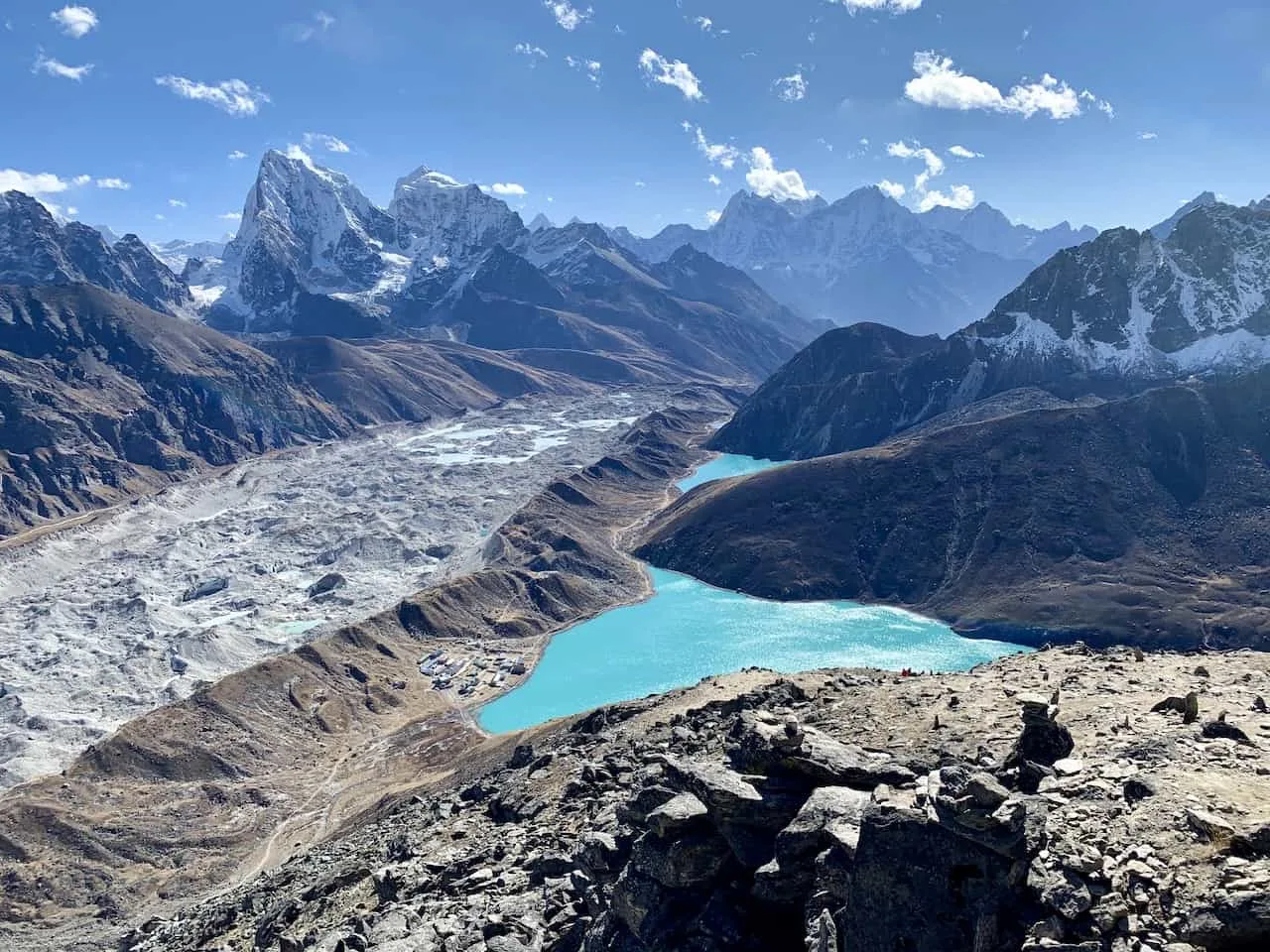
7) Local Holidays
This consideration can go either way depending on the type of local holiday we are talking about. When I was planning my trip, I realized that there were some countries that had week long (or more) holidays, where the whole country takes time off to travel.
A few of these examples include Golden Week in Japan, Holy Week in the Philippines, and Chinese New Year in China.
During those time periods, it is not only tourists who are looking for hotels and taking part of activities, but it is also much of the local population. This in turn makes places much more crowded and expensive to get to.
On the other hand though, there are also positives for going somewhere during local holidays. Engraining yourself in the culture and seeing firsthand some of these celebrations can be something very rewarding.
On my bucket list for example, is to visit India during Holi and Thailand during Songkran. These are holidays I would love to experience and be part of.
It all just depends on what is of interest to you and what you want to get out of the experience visiting a certain country.
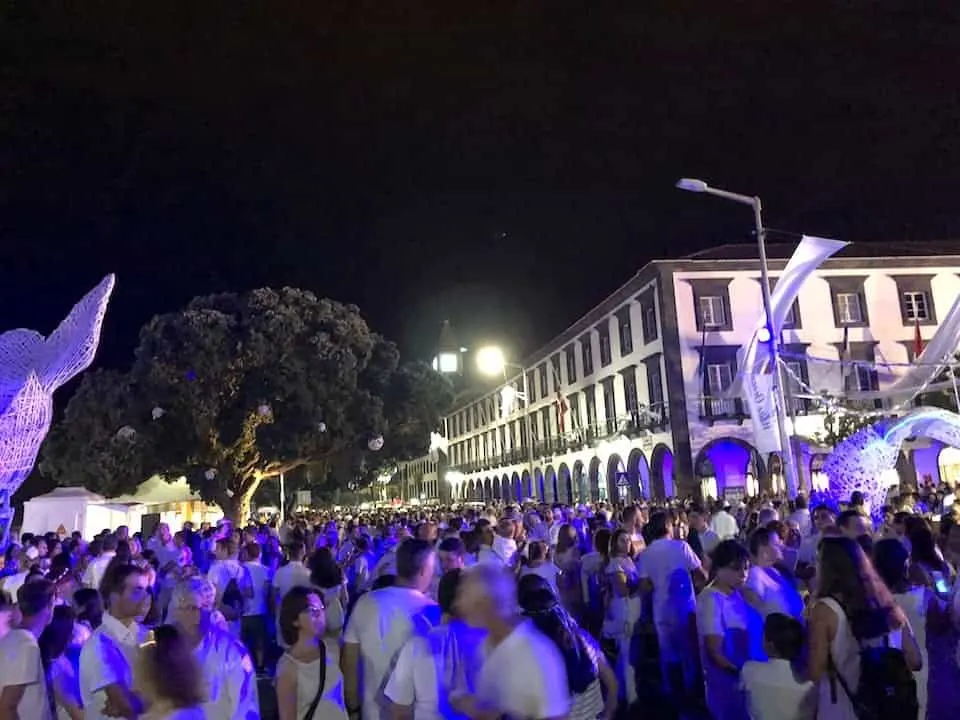
8) Avoiding Peak Season
Most countries can be split up into three buckets when it comes to tourist seasons – peak, shoulder and low. This usually comes down to weather and time of year (summer, holiday, etc.).
Traveling to countries during peak season will bring the highest prices, lowest availability, and the most crowds. At one point or another it will be impossible to avoid a peak season if you are traveling for an extended period of time.
Traveling during shoulder seasons is usually the most ideal. The crowds have gone down, the weather is still great, and you can have more flexibility with what is available (hotels, tours, restaurants).
Low season usually goes hand in hand with when the weather is the least ideal. Few people are going to go to beaches in Europe during the wintertime. However, there are other times where low season may be viable.
For example, I traveled to Jordan during the summer, when the weather was the hottest (+100 F each day). I however, didn’t mind the dry heat. Having the chance to enjoy Petra and Wadi Rum without the crowds was a fair trade off for me.

9) Prior Commitments
For those that are traveling for longer periods of time, it may be difficult to plan around life events of family and friends. While I knew I wanted to travel for a year, I also knew that I would have some weddings to attend during that same time period.
For me, I decided to split the trip into two, coming back for a month in between to attend those weddings. If you fall under that same situation, maybe you do the same, or maybe you decide to just travel through it.
At the end of the day, you just need to have your priorities and plan the trip around them. Understand what is most important to you and build your trip off of that.
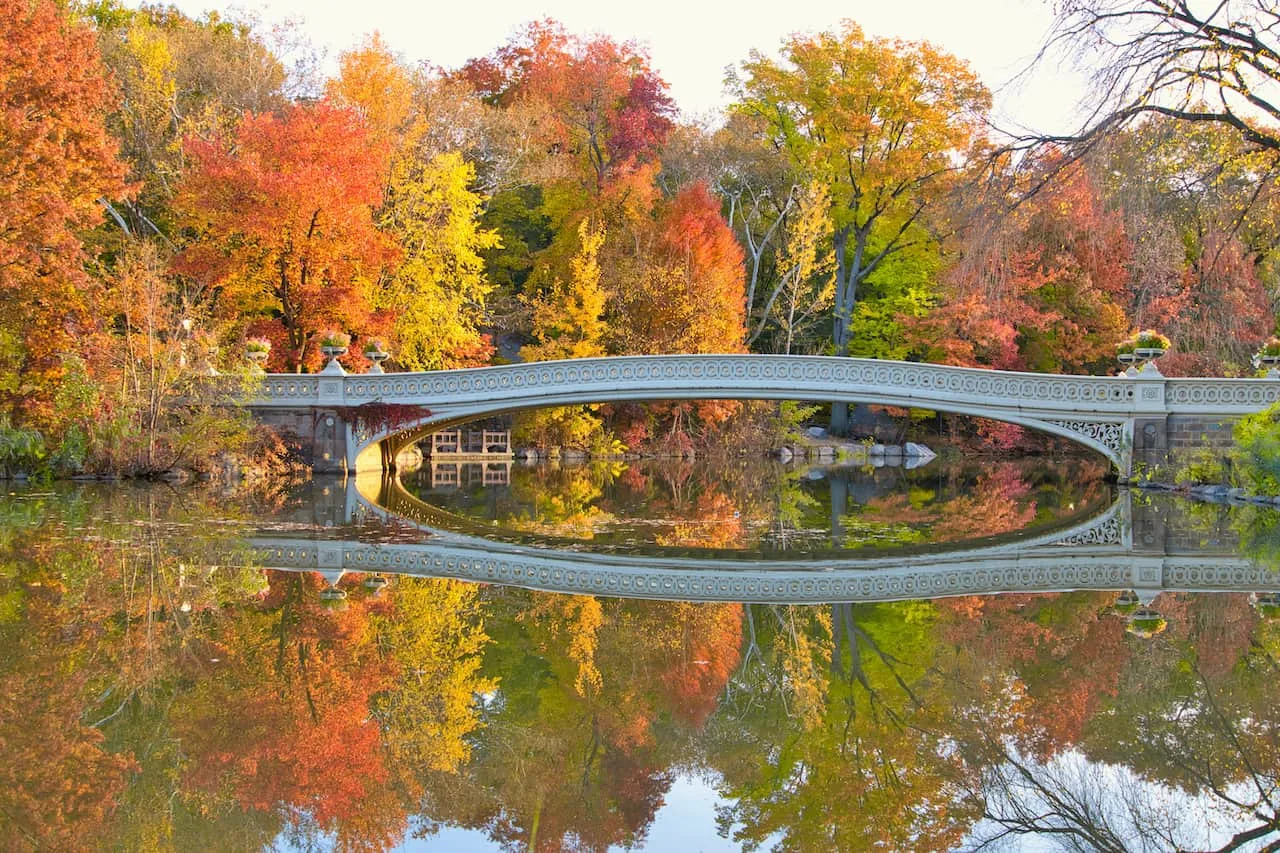
10) Figuring Out a Route
Once you combine all of the above, you should start seeing a much clearer picture of planning a trip around the world. There are certainly many things to consider. Some of which may be very important to you, while others not so much of a worry.
As you start putting together that around the world itinerary route, there are some additional aspects you want to think about.
Direction of Travel
Do you want to go east to west or west to east? If you decide to start traveling east, you will lose time and may have more jetlag. Heading westbound, you will gain an hour for every time zone you go through until you cross the International Date Line.
I wouldn’t say this is such an important decision, but overall it just makes sense to build your trip going in one general direction (something I did not always do).
Flights vs Overland Routes
This will go hand in hand with your budget, but you will also want to think about flying between places vs. taking public transport (whether that be bus, trains, or boats).
When I was in Europe for example, I never took a flight. I simply made sure the cities I ended up in had easy train or bus connections with the next country/city I wanted to go to. In the Philippines, flights were the only way to easily get between islands without spending days on long boat rides.
As you do research, be sure to understand what a route between two places would look like to get you from A to B. If you are flying, try to keep the layovers to a minimum. If you are taking buses or trains, maybe opt for an overnight option to save time.
RTW Tickets or One Way
RTW tickets (round the world), have been a popular option for those planning a trip around the world. For one set price, you are able to book a set number of tickets between countries going in a certain direction.
The downside of this however, is that the dates of travel are set in stone (without paying change fees). This can limit your flexibility when it comes to changing of travel plans.
I ended up just continuously booking one way tickets as I went along. It gave me tons of flexibility and I never felt rushed needing to get to my next destination.
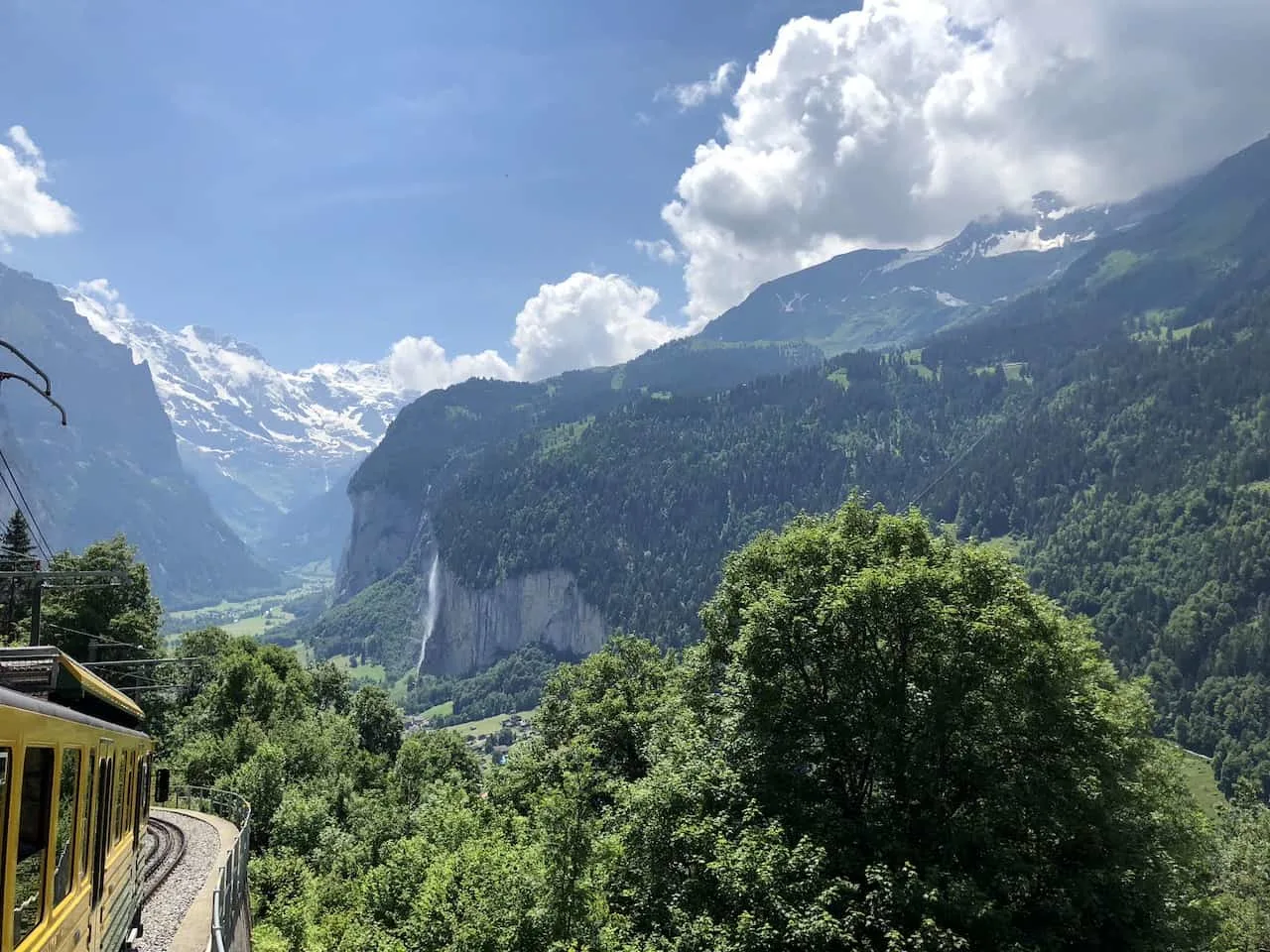
11) Packing List
As you are getting closer to departing for your trip around the world, you will need to think about your packing list.
My goal was to be light and efficient. I did not want to be lugging suitcases around everywhere I went. Instead I wanted to always have carry on baggage only and be able to move around easily with my luggage.
I decided on two backpacks. One was an Osprey Porter 46L that has basically all my clothes, toiletries, and hiking shoes. The second was the Osprey Nebula, which is essentially just a normal backpack. I put my laptop, electronics, camera, and all my important documents in it.
Since for the vast majority of the trip I was going to be in non-winter weather, it wasn’t too difficult to pack accordingly. The one time in Nepal when it was colder, I decided to just rent a heavier jacket in Kathmandu for the trek I was doing.
The idea here though is to just worry about your essentials. You can do laundry anywhere you go! Having just a handful of shirts and shorts, with a pair of pants and sweatshirt is going to work.
→ Take a deep dive into my around the world packing list that will go through it all and more!
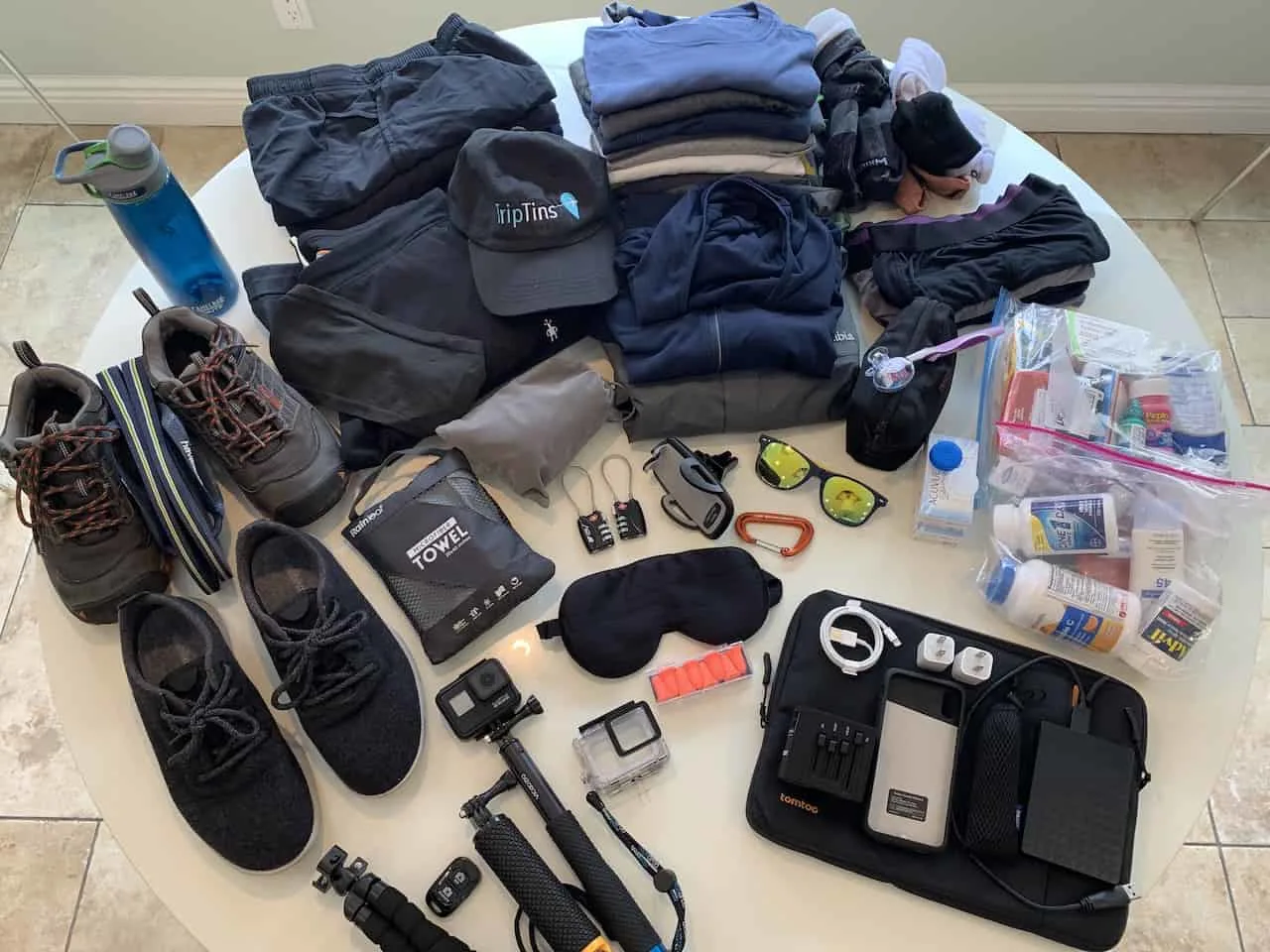
12) Vaccinations
The last thing I wanted to mention before getting into some helpful tips, is to spend time researching what vaccinations you will need.
Depending on what area of the world you are going to, you may need to get certain vaccines or bring certain medications with you (typhoid, malaria, etc.). Be sure to consult with a travel doctor to be sure you are fully covered when it comes to your health.
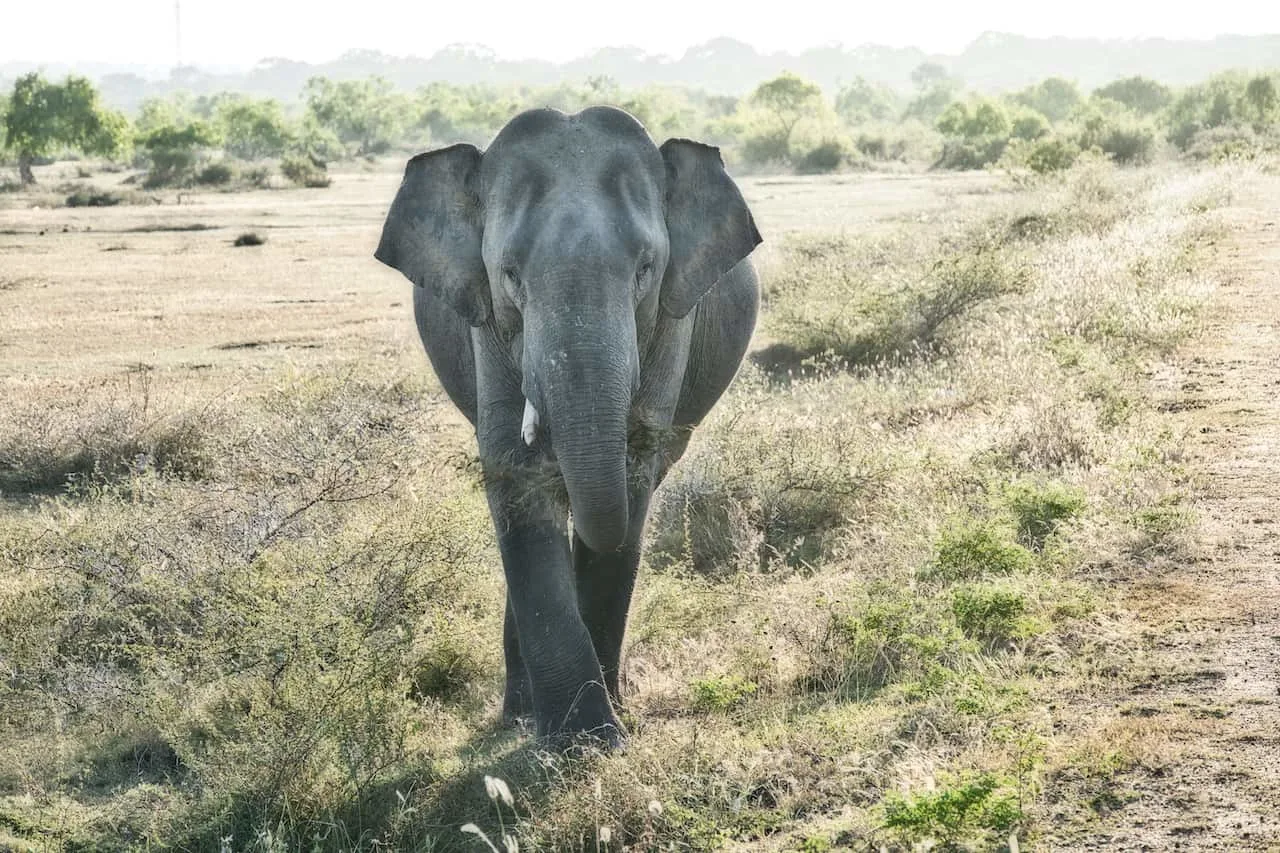
13) Travel Planning Tips
Below are just a few final tips and pieces of advice to consider as you are planning a trip around the world:
Quality over Quantity
Don’t think about a trip around the world as a way to go to as many places as you can in a time period.
Spending a day in one country, taking a bus to another country to spend another day in a second country, before taking a train to a third country to spend a third day – does that sound like a good time to you?
Just because that route takes you to three countries, is it more important for you to say you have been to three countries or is it more important that you actually enjoy your time in each country. For me, it is always the latter.
Like I said at the beginning, I had a long list of places I wanted to visit, and ended up cutting out many of them. Even the countries I visited, I didn’t end up visiting each place I wanted to go to. For me, that just leaves me a reason to go back to countries I truly enjoyed.
Flexibility
Try your best not to give yourself a specific day by day itinerary that you must follow to the tee the whole way through. By doing so, you remove the flexibility from the trip if something goes wrong.
For example, during my second week in New Zealand (and second week overall of my trip), there was a major storm that knocked off access to the west coast of the South Island. I quickly re-worked my itinerary to change up what days I would be visiting certain cities.
If you are traveling to places where weather is a bit more unpredictable (mostly the mountains), always plan more time than you think. When I was in El Chalten in Patagonia, I knew I wanted to do 3 hikes that would have taken me 6 days total to complete.
I did not just book 6 nights in El Chalten. I ended up staying for 10 nights since the weather was so hit or miss on a day to day basis. I ended up enjoying all the hikes in nice weather, and had some downtime in between as well when the weather was poor.
Things may not always go according to plan so you really need to just be prepared to work with what is given to you in a certain situation.
Add in Off Days
I can’t recommend this idea enough. Traveling full time may seem relaxing to some, but in reality it can be very exhausting. Spending 12+ hours on your feet exploring different places, going on hikes, and taking part of activities takes a toll on your body.
I definitely overdid it at some points during my trip leaving me just all burnt out. From there though I learned, and I decided to just add extra days to certain spots just to sit back and recharge.
Believe me, you will need these!
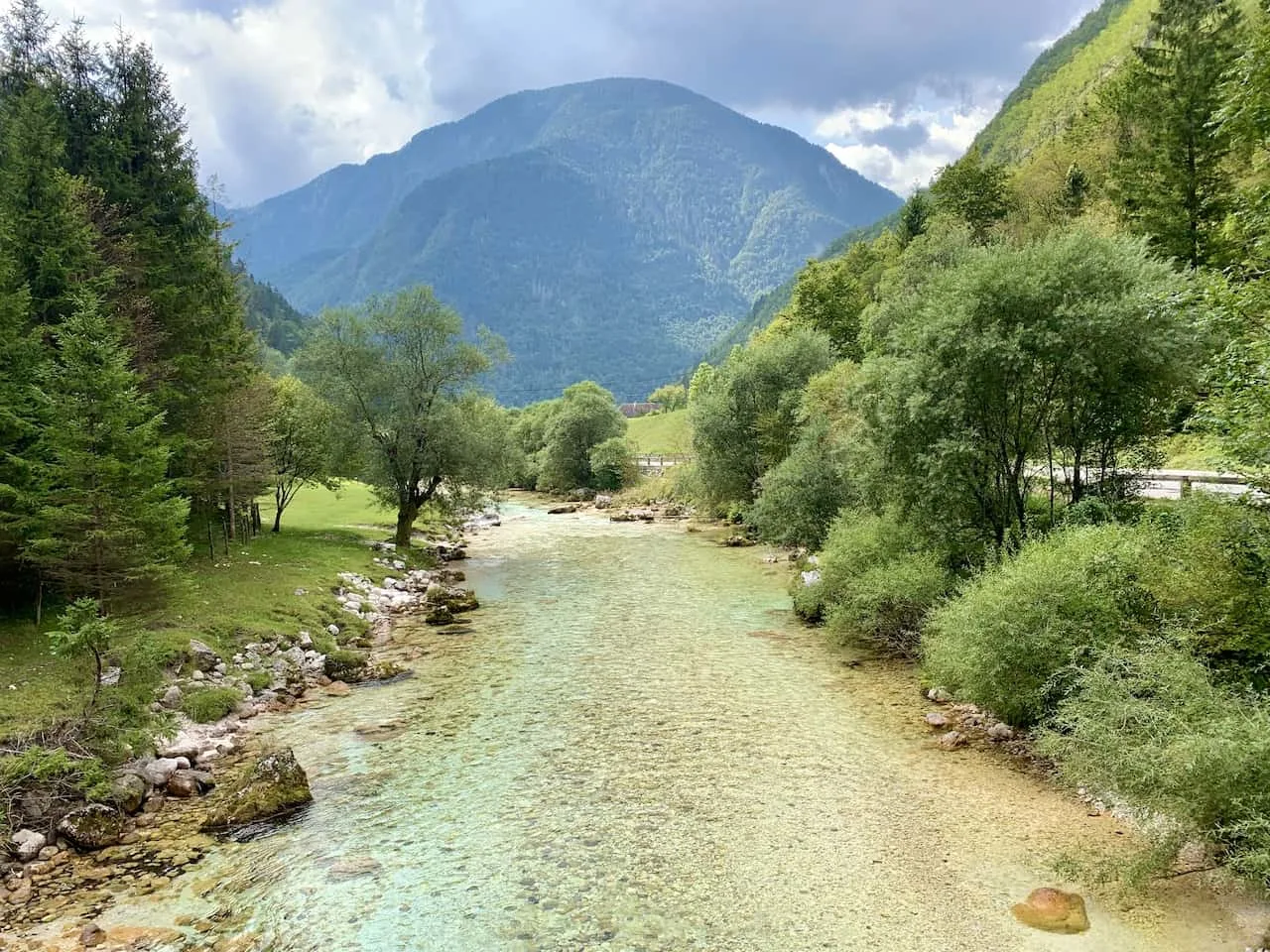
I hope by now, you have a much better understanding of the various considerations to think about when planning a trip around the world.
It is not an easy or short process, so be sure to take the time to really think through all the various steps before taking that journey.
If you have any questions or comments about planning an around the world itinerary, be sure to add them in below. Have fun out there and safe travels!
